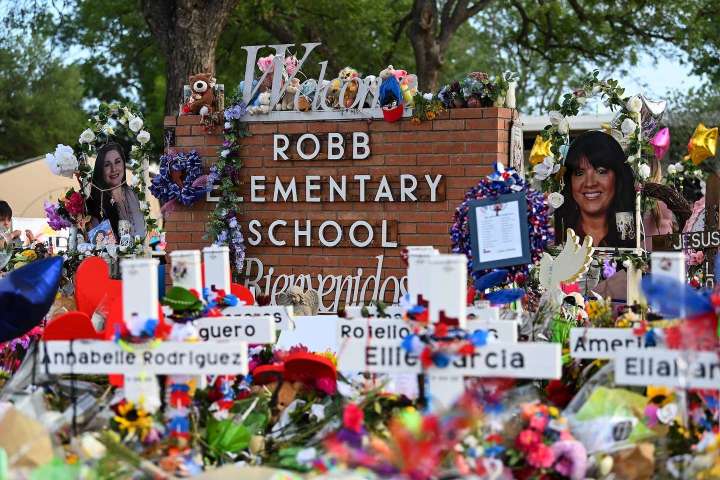Richard Parker is the author of “Lone Star Nation: How Texas Will Transform America.”
I’m a Texas gun owner. The Texas way of guns is an American failure.

You can’t say Texas’s gun laws failed because they worked exactly as designed. Everything the shooter did was strictly legal — except for the murdering. Yet those gun laws, many of them the result of loosening over the past seven years during the tenure of Gov. Greg Abbott (R), bear plenty of responsibility for the shooting. They reflect a “systemic failure” of Texas gun culture.
Many Americans, and Texans in particular, have a mythical misconception about the state: In rootin’, tootin’ Texas, this has always been the way with guns. But that simply isn’t true. Until 1870, sure, Texas was part of the Wild West when it came to guns. Yet in 1870, that all changed: The state legislature banned carrying firearms outside the home.
Texas was one of the first states to do so, leading the way on gun-safety laws into the 20th century. It also banned knives, daggers and other weapons from being carried in public. In the 1920s, Texas quadrupled fines for violations (and sent offenders who couldn’t pay them into prison work gangs), banned automatic weapons altogether and imposed a hefty 50 percent tax on gun sales.
These laws remained on the books until an initial legislative assault in the 1970s. In the early 1990s, the last Democratic governor of Texas, Ann Richards, backed by police, vetoed a bill legalizing concealed weapons. That played a big role in her 1994 downfall when she lost to George W. Bush.
The new Republican governor signed a concealed-carry law in 1995, saying it would “make Texas a safer place.” Thus was born the unofficial “Ann Richards rule” in Texas politics: Never oppose bills expanding gun rights.
Other than signing a stand-your-ground law, Rick Perry, who followed Bush as governor, mostly just talked about guns, when he wasn’t posing with them. But under Abbott today, and a Republican-controlled legislature, Texans can carry a gun pretty much any place except where a posted sign prohibits it.
You can openly carry a 9mm pistol at the grocery store, walk into a coffee shop with an AK-47 as long as there’s no sign prohibiting firearms. I can even keep my .45-caliber pistol right in the center console of my truck — without a license.
Sweeping in its condemnation of every institution — except the legislature and the governor — the Uvalde report is long on detail and short on insight. While painstakingly describing the killer’s legal purchases of weapons and ammunition right after he turned 18, the report doesn’t discuss the wisdom or morality of allowing such purchases when seven states outlaw precisely that.
In Texas, there is a Palo Duro Canyon-size gap between what politicians so often say they value — children — and what they’re willing to spend to protect them: a little less than $10 per student.
As a gun owner, I think selling civilianized military-style long rifles to anyone is wrong — AK-47s, SKSs, AR-15s, the whole lot. Selling them to 18-year-olds is just perverse. But Americans own about 20 million of these weapons — and that’s just the AR-15-style rifles among the nearly 400 million guns nationwide. I’m dubious about ever getting them out of circulation.
So, in a nation bristling with guns of all types, and where schools have become prime targets of teenage male predators, protecting students is essential. That will mean stronger physical measures: high fences, armed guards, remote-locking doors and gates. And smarter technology: panic buttons, security apps and even increased local police monitoring of social media. Better mental health care is an obvious need.
“You’re going get what you pay for, and I don’t think you’re going to get very much for $10 per student,” San Antonio Police Chief William McManus told me Monday. “Most schools don’t have the budget, and the people who dole out the budgets are not convinced that that money is needed there.”
After Uvalde, Congress started talking seriously about more funding for school security. Good. I hope plenty of that money comes to Texas because we bear the terrible distinction of leading the country in school shootings since 2012. It turns out everything in Texas is indeed bigger — including the systemic failure of everything about guns.






